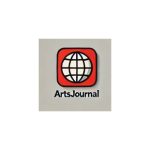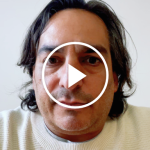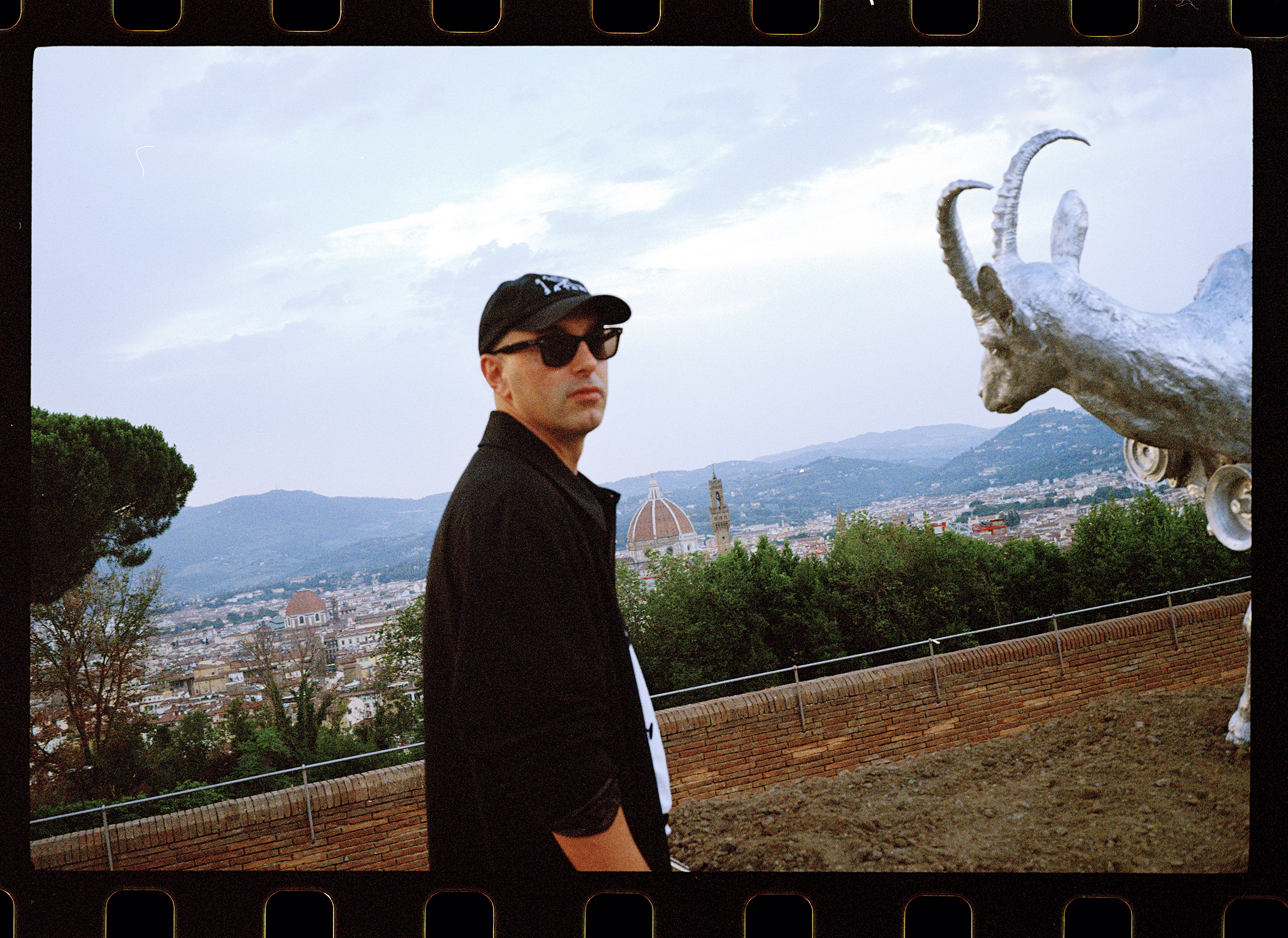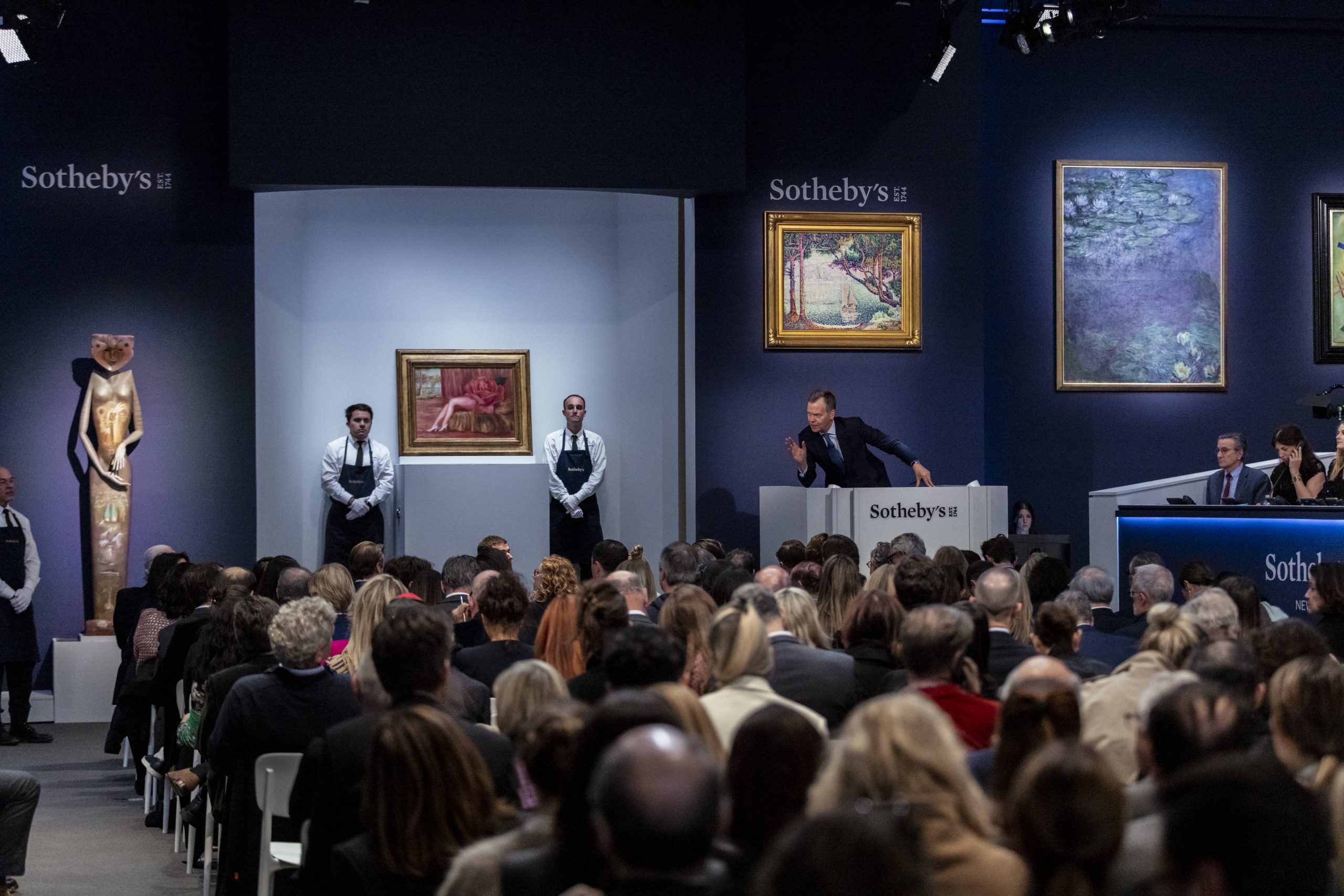One example is VIT (2020), a surreal video divided into three acts for which Vascellari was put to sleep and strapped to a gurney that was flown by helicopter over the forest and mountains of Cansiglio in northern Italy. This eerie vignette, partly inspired by the opening scene of the film La Dolce Vita (1960) in which a statue of Christ is transported from Milan to Rome, is followed by what the artist called a “nocturnal oneiric vision, a dream.” VIT is featured in the touring group exhibition “Poetics of Encryption,” which debuted this year at KW Institute for Contemporary Art in Berlin and travels to Kunsthal Charlottenborg on September 28.
Video still of VIT (2020). Image courtesy Studio Nico Vascellari.
Last fall, Horse Power (2023), a series of part-animal, part-machine monuments that explore our confused relationship with the natural world, was installed at Florence’s Forte Belvedere. The Fifth Room (2024), included in Casa di Goethe in Rome’s “The Uncanny House” exhibition earlier this year, was a livestream of an unidentified underground bunker occupied solely by an endlessly rotating light bulb that begins to feel increasingly sinister.
Live performance and all its inevitably unpredictable elements are also central to Vascellari’s practice. Over the summer at Haus der Kunst in Munich, he presented the latest iteration of a series of performances named Alessio after a 26-year-old nonverbal autistic man who frequents the bar near Vascellari’s studio in Rome. The work, inspired by Alessio’s sounds and gestures, explored modes of self-expression beyond language.
How does such an expansive practice originate from one studio? Vascellari works out of a former post office in central-southern Rome that he described as “a raw, quasi-industrial space.” It is “less a static environment” than “a living, breathing entity, a place where echoes of past works and visions of future ones coexist.”
The studio truly is a place that has adapted to favor meditation, research, experimentation, and creation in the abstract rather than the practical sense,” he elaborated. “I would almost say it’s my safe haven. Since I travel a lot, I often find that inertia keeps the dynamics of my research and my creativity going, even and especially when it comes to the materialization of works, performances, and soundscapes.
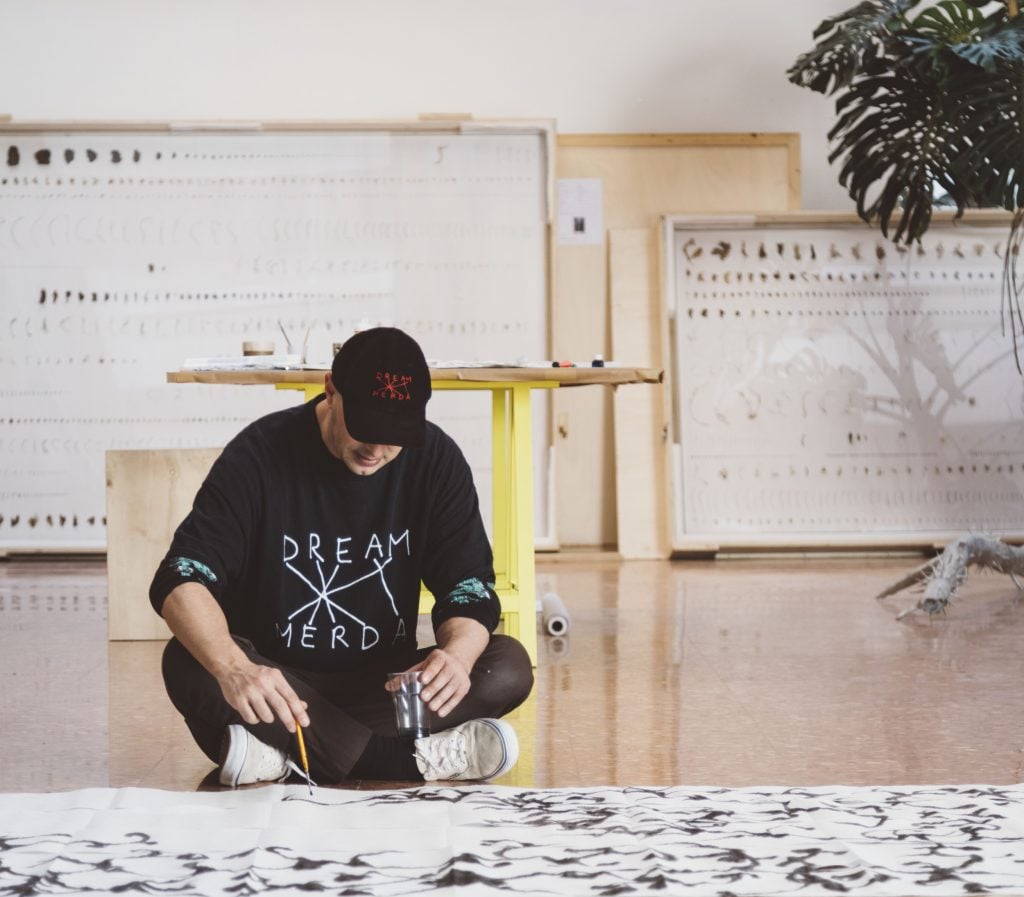
Nico Vascellari in the studio. Photo: © Lea Anouchinsky for Elle Decor Italia.
What kind of atmosphere do you prefer to work in?
The atmosphere in my studio is intentionally immersive, bordering on overwhelming. I surround myself with sound— mostly records and tapes from my collection, which I keep at the studio and I go through quite often for reminiscence or inspiration. It is almost a sonic cocoon that helps me channel the energy I need for my work.
Generally speaking, I am quite a collector—bordering on hoarder, I’m afraid—mostly of books, zines, music, concert memorabilia, band t-shirts, and other items. The rest of my studio is instead quite brightly colored. Inspiration also comes from these juxtapositions and the visual contrast they generate.
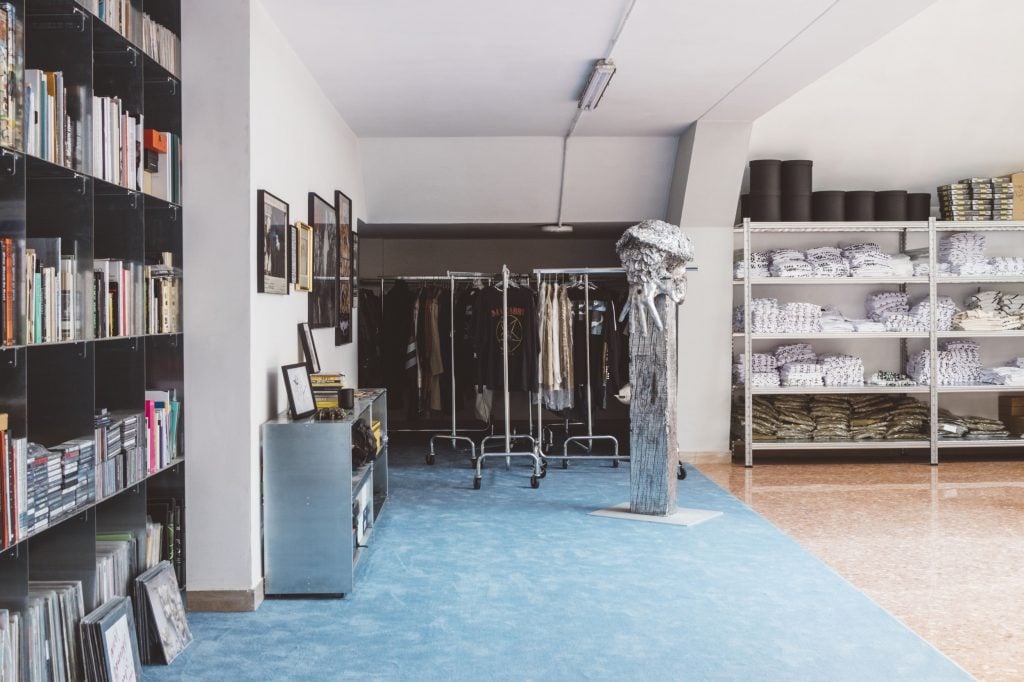
Studio of Nico Vascellari. Photo: © Lea Anouchinsky for Elle Decor Italia.
When you feel stuck while preparing for a show, what do you do to get unstuck?
When I hit a wall, I disrupt the routine. I’ll leave the studio and immerse myself in nature, often heading into the woods near my hometown in northeast Italy. The rawness of these environments allows me to reconnect with the primal energy that fuels my work. The forest of Cansiglio has also turned out to be the subject of various works like VIT (2020).
The idea of being asleep, additionally, recalls a painting by Caspar David Friedrich, Wanderer above the Sea of Fog, in which fog represents precisely the unknown. There arises a parallel here, to be made between the inevitable sense of occasionally feeling creatively stuck, and looking for a remedy in reconnecting with one’s roots, however primal.
What tool or art supply do you enjoy working with the most, and why?
When it comes to choosing a favorite tool or art supply, I find that nothing compares to the primal connection of using my hands. My hands allow me to truly feel and interact with the materials around me in the most authentic and visceral way possible. Whether I’m smearing paint, tearing paper, or shaping clay, I am drawn to establishing a physical connection with the elements.
What might surprise a visitor in my studio? You’ll find an eclectic mix of materials: plant leaves, melted chocolate, toilet paper, and even deodorant. It’s the texture of materials that excites me; they carry their own histories and references, their own qualities, and I enjoy exploring the possibilities.
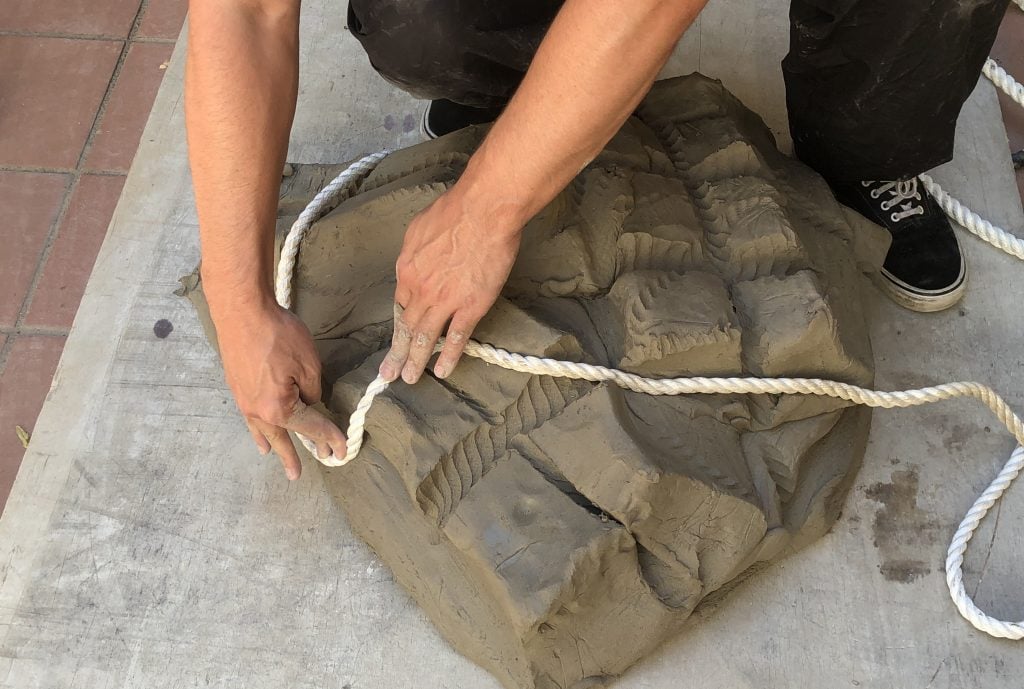
Studies in clay for a new artwork. Photo courtesy of Studio Nico Vascellari.


